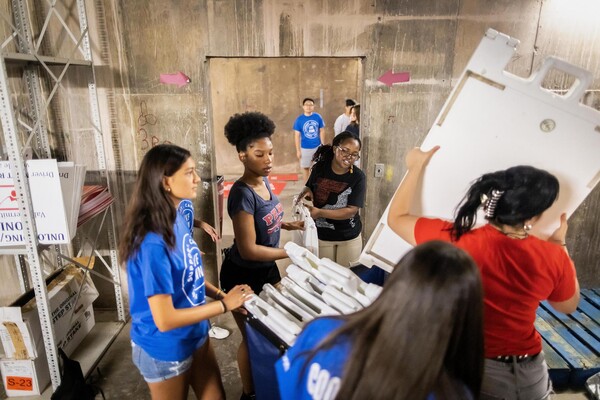SEPTA in need of new ideas, more funding
Vukan Vuchic has spent his career studying transit systems the world over, and in that time has seen the best and the worst in public transportation—from Houston and Tokyo to Munich and New York.
One thing he’s never seen, however, is a city the size of Philadelphia cut transit services quite as drastically as SEPTA recently threatened to. For a system that already is obsolete, he says, any more cutbacks would be disastrous—and likely spell doom for transit in the Philadelphia region.
“It would be nothing short of a disaster,” says Vuchic, the UPS Foundation Transportation Professor of City and Regional Planning in Penn’s School of Engineering and Applied Science. “This city would be the first in the world to do that.”
SEPTA for much of the past few months warned Pennsylvania lawmakers that, because of a $62 million budget shortfall, it would have to cut services and lay off 1,400 workers in the Philadelphia region, unless the state could bail the system out. As part of the proposed cuts, SEPTA threatened to cut weekend services entirely and boost fares. As of this printing, the situation remained unsettled, with state leaders considering a move that would direct federal highway funding toward SEPTA and other transit systems in a last-gasp effort to keep the systems running regularly. That would be a one-time solution, however, leaving the future of the SEPTA in doubt.
And Vuchic says that if SEPTA ever did follow through on service cutbacks, the transit authority would not only leave thousands of Philadelphians without transportation, but could also destroy any chance of turning what he considers an inadequate system into a good one in the future. The riders lost when the cutbacks were made might never be regained, he said. Additionally, Vuchic says, the city would suffer a wave of other bad side effects, from overcrowded highways to a massive loss of tourism.
“People say, ‘Well, it’s bad because people won’t be able to get to work,’ but it’s more than just that,” Vuchic says. “How can you possibly have a city without weekend transit service? The functionality of the city would be heavily penalized, both socially and economically. It’s simply unimaginable.”
Meanwhile, Anthony Tomazinis, professor of City and Regional Planning in Penn’s School of Design, says the budget deficit that started the crisis is merely a symptom of a larger problem for SEPTA—namely, the fact that its entire system is woefully out of date.
“It’s as obsolete a system as it could possibly be,” says Tomazinis. Both Tomazinis and Vuchic said poor planning and weak public investment have left SEPTA’s system incapable of serving Philadelphia-area residents. While cities such as Boston, Portland, Dallas and San Francisco have in recent years poured millions of dollars in public money into their burgeoning transit networks, Philadelphia and SEPTA have done little to update a system that has long been inadequte. “These other cities are putting billions into transit, but we can’t find half a billion?” Vuchic asks. “That’s what is so discouraging. Philadelphia has done nothing.”
Part of the problem, Tomazinis says, is that SEPTA officials don’t have even the most basic information about their ridership—where their riders come from, or where they need to go. As a result, SEPTA cannot offer the kind of innovative services other cites are already providing. Seattle, for instance, has launched a program that allows individual riders to reserve rides in transit vans via the Internet. SEPTA, by contrast, is operating with a model that no longer meets the needs of its service area. Tomazinis says trains could be updated to be more user-friendly, while Vuchic says some lines could easily be extended to serve other areas.
“There’s no inventiveness in the system at all.” Tomazinis says.
But Tomazinis and Vuchic also say transit in Philadelphia can be saved. Vuchic says it’s time Pennsylvania bucks up and funds transit systems more fully, possibly through a gasoline tax.
Tomazinis, meanwhile, says the Philadelphia region has to take a more proactive role in funding its own system. It’s inherently unfair, he says, to ask the state’s rural residents to pay for a system that they won’t use.
“If the governor has any real desire to instill any kind of hope for the system, he must appoint a commission that would be charged with updating the system for the 21st century,” Tomazinis says.







